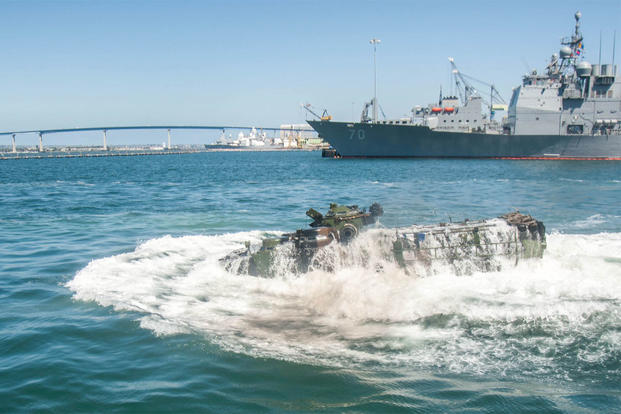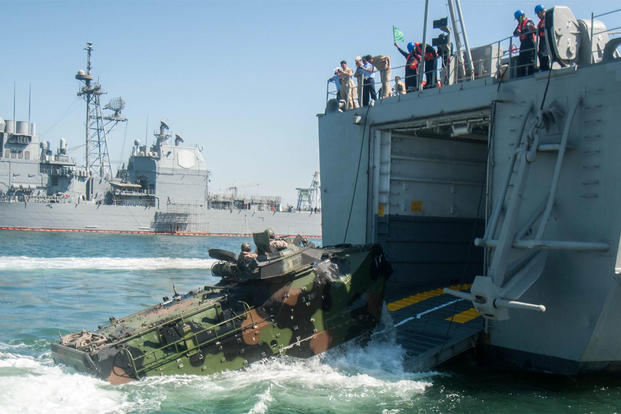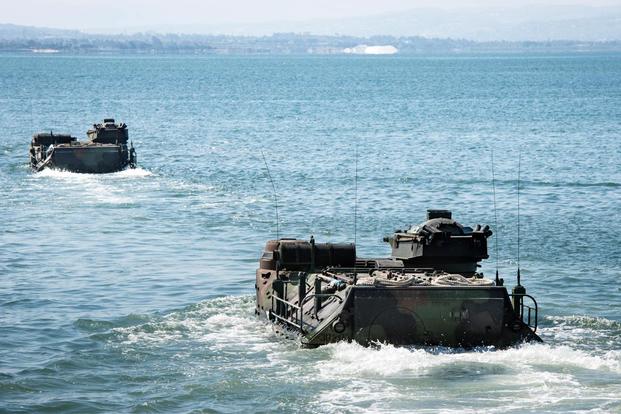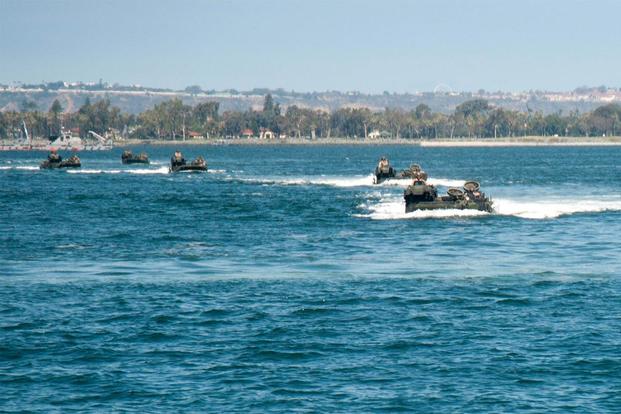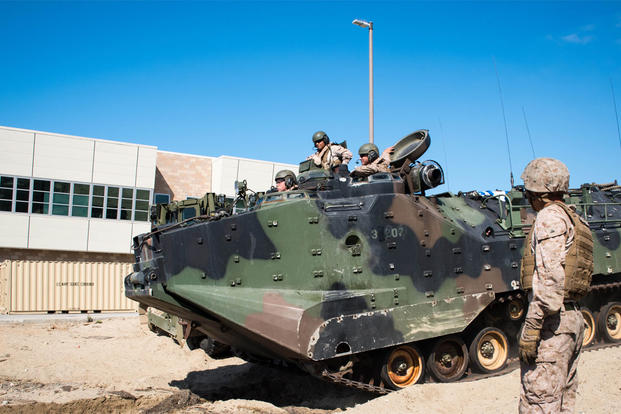NAVAL BASE SAN DIEGO, Calif. — U.S. Marines and the Mexican Navy ship ARM Usumacinta (A-412) conducted assault amphibious vehicle operations at Naval Base San Diego as part of the multinational exercise Rim of the Pacific, July 6, 2016.
Six U.S. Marine AAVs, attached to Company B, 3rd Amphibious Assault Battalion, took part in the exercise. This event served as the initial certification for U.S. amphibious assault vehicles that embarked Usumacinta.
“This exercise is really one of the first times that we were able to get some foreign crews familiarized with AAVs, their capabilities and limitations, and what we can offer a ground force as well as an amphibious force,” said 1st Lt. Robert Plante, Company B, 3rd Amphibious Assault Battalion. “This evolution promotes joint operability that can pay dividends in the future.”
The AAVs launched from Naval Amphibious Base Coronado in transit to the Usumacinta, moored at Naval Base San Diego. Mexican and U.S. forces worked side-by-side to safely recover the vehicles, guiding them onto the ship’s ramp and into the well deck. The scenario tested the Marine combat team's versatility, while providing realistic training to the Mexican navy.
“We are certifying not just the vehicles but our signalmen and our trafficmen,” said Lt. Diego Galeana, ARM Usumacinta’s officer in charge. “This experience for the crew and the U.S. Marines has been a unique one. Through working together we are strengthening the partnership between U.S. and Mexican forces.”
The Southern California portion of RIMPAC allows U.S. and partner nations to train together with sea and shore based commands. Participants will receive relevant and realistic training in amphibious operations, explosive ordnance disposal, mine warfare countermeasures, and dive operations.
Twenty-six nations, more than 40 ships and submarines, more than 200 aircraft and 25,000 personnel are participating in RIMPAC from June 30 to Aug. 4, in and around the Hawaiian Islands and Southern California. The world's largest international maritime exercise, RIMPAC provides a unique training opportunity that helps participants foster and sustain the cooperative relationships that are critical to ensuring the safety of sea lanes and security on the world's oceans. RIMPAC 2016 is the 25th exercise in the series that began in 1971.
